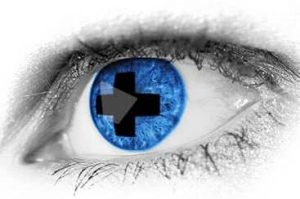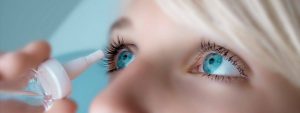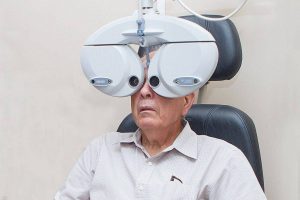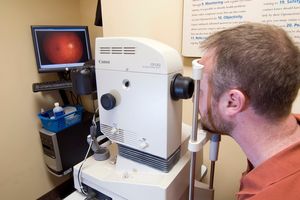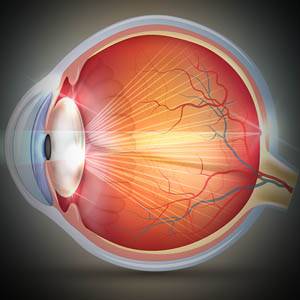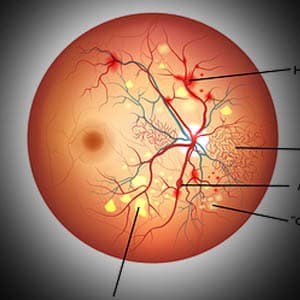Allergies and Contact Lenses: Part 2 Q
Pollen is not the only cause of allergies that can affect your eyes and make wearing contact lenses uncomfortable. Dust, mold, smoke, and pet dander
Read MoreEyes and Herpes: Q&A
Herpes eye infection requires urgent medical attention. Eye herpes, also known as herpes keratitis, is a viral infection of the eye caused by the herpes
Read MoreHow Does Herpes Affect the Eyes?
Eye herpes affects over 1.5 million people around the world each year. The most common type of eye herpes is called epithelial keratitis, which tends
Read MoreContact Lenses: Daily or Monthly?
An estimated 45 million people in the U.S. wear contact lenses. Contact lenses are a great choice for people who want convenience and clear vision.
Read MoreIs Sleeping in Contact Lenses Dangerous?
About one-third of contact lens wearers occasionally sleep with their lenses. It’s easy to fall asleep in your contact lenses; one minute you’re reading a
Read MorePink Eye: What Do I Do?
If your child’s eyes are sore, scratchy or watery, they most likely have ‘Pink Eye’. Pink eye is the most common eye problem among children,
Read MoreTop 5 Pediatric Eye Emergencies
In the United States, approximately 380,000 patients per year are seen by emergency eye doctors. Over 33% are children requiring emergency eye care. While pediatric
Read MoreWhen is Blurred Vision a Medical Emergency?
Almost everyone experiences blurry vision. If a headache occurs with or causes blurred vision, it may be due to an underlying condition or medical emergency.
Read MoreAlbinism and Low Vision
Albinism affects at least 1 in 20,000 of the population. Ocular albinism affects the eyes, possibly causing dramatic loss of visual function and impact on the quality of life.
Read MoreReading Tips For People With Low Vision
Approximately 3.22 million people in the United States have a visual impairment. For people with a visual impairment, reading is often one of the most
Read MoreGlaucoma, Tunnel Vision and Low Vision
Glaucoma causes ‘Tunnel Vision’ and is one of the leading causes of blindness worldwide. Glaucoma is an eye diseases that damages the optic nerve, leading to permanent vision loss. The most common type of glaucoma shows no early warning signs, and can only be detected during a comprehensive eye exam. If left untreated, glaucoma can cause peripheral vision loss and even permanent blindness.
Read MoreTop Home Tips for Low Vision
One in six adults over age of 45 and one in four adults over age 75 has low vision. Having low vision – reduced vision that can’t be improved with glasses, contact lenses, medication or surgery – can make it difficult to perform day-to-day tasks. Fortunately, there are many things a person with low vision can do to remain independent and do the things they enjoy and love.
Read MoreWhat Causes Low Vision In Children?
More than half a million children in North America are blind or have low vision. Having impaired vision makes it difficult to read, play sports,
Read More2021 Update: Published Studies in Vision Therapy
Evidence-based medicine integrates academic research with clinical trials — making it the gold standard of published research. Are looking for published research on VT? Provided
Read More2021 Update: Vision Therapy for Adults
Vision therapy can be more effective for adult patients, as they are typically more motivated in therapy.
Once an adult starts to notice the results of vision therapy with their own eyes they realize how beneficial it can be for them, motivating them to improve even further.
Vision Therapy for Concussions
Up to 90% of people experience vision problems after experiencing a concussion. The symptoms that persist following a concussion are collectively called Post Trauma Vision
Read MoreGlaucoma: What are the Signs?
Did you know about 3 million people in the U.S. are affected by glaucoma, but only half are aware they have it? Over 90% of
Read MoreGlaucoma: ‘The Silent Thief of Sight’
Did you know that rock star Bono from U2 has glaucoma? U2’s Bono is not alone, at least 3 million North Americans have glaucoma, but only 50% know they have it! In 95% of glaucoma cases, it starts off asymptomatic and by the time the condition is noticed, the vision loss is irreversible. That’s why regular eye exams are so crucial, even if you don’t suspect a problem.
Read MoreTop 5 Myopia Myths
Do you want to know the truth about the top 5 myopia myths? Myopia affects 1.45 billion people worldwide and is the most common refractive
Read MoreSmoking and Glaucoma
We all know smoking impacts our general health, but did you know it can also affect the eyes? More than 1 billion people worldwide smoke
Read MoreWhat to Do Before an Eye Exam?
About to come in for your eye exam? To get the most out of your visit, start preparing with these 4 tips. If you’re experiencing
Read MoreTop 10 Tips For Contact Lens Wearers
If you wear contact lenses, you’ll want to read our list of the top 10 healthy habits that all contact lens wearers should follow. Do
Read MoreWhen are Atropine Eye Drops Used?
Atropine is an essential eye drop used by eye doctors in both the diagnosis and treatment of many eye conditions. When you go for your
Read MoreCan Sugar Affect Eye Health?
We all enjoy a sweet treat now and then, but too much sugar in our diet can come at a price. Here’s how eating excessive
Read MoreCan Sleep Apnea Affect Your Eyes?
Sleep apnea can affect not only your physical health, but can have serious consequences for your eyes and vision too. If you have sleep apnea,
Read MoreMacular Degeneration: Myths and Facts
Let’s clear up some myths and facts on a serious sight-threatening eye condition, macular degeneration. Macular degeneration, also known as AMD, is a chronic eye condition most common in people over 60. People with macular degeneration may lose their central vision, but retain their peripheral, or side vision. There’s a lot of information about AMD out there, but how much of it is true? Considering it’s a leading cause of blindness and vision loss, it’s pretty important to get the facts straight.
Read MoreEye Health
Eyes are known as the ‘windows to your soul’, but they are the window to your health as well. Diseases such as diabetes, high cholesterol, heart and vascular diseases, and even some forms of cancer could be detected during an eye exam. According to Eye-Q, over 20% of Americans say an eye doctor detected a health issue – not related to the eyes.
Read MoreEyes and Obesity
Obesity is a global medical epidemic, research clearly shows the direct correlation between obesity and eye diseases. Studies show that obesity increases the risk of
Read MoreDoes Smoking Affect the Eyes?
Smoking, especially over a long period of time, can have a major effect on your eye health and vision. The effects of cigarettes and tobacco on health are widely known, but few understand the negative impact they can have on eye health and vision.
Read MoreWhat Are Eye Flashes?
Have you ever been startled by the appearance of small flashes of light out of the corner of your eye? Eye flashes When eye flashes
Read MoreEye Floaters: Should I Worry?
Eye floaters can be a sign of serious disease, but now eye doctors can successfully treat with a range of very effective options. What are
Read MoreWhat Are Side Vision Glasses?
Side-vision awareness glasses are an effective low vision device that increases the viewing field for people suffering from side vision loss. Side vision awareness glasses
Read MoreEye Protection at Home
90% of eye injuries can be prevented with appropriate eye protection. Many people perform their daily chores without even thinking about the risk of an eye injury. Considering 50% of all eye injuries occur at home, you may want to think about increasing your eye protection around the house.
Read MoreEye Injuries: Are All Toys Safe for Children?
An estimated 11,000 toy-related eye injuries occur in the United States, each year. When purchasing toys for your children keep in mind that many toys
Read MoreCan Steroids Affect Vision?
While steroids are a commonly prescribed treatment, they must be taken with caution as they can also produce certain side effects that can affect your eyes and vision. Corticosteroid drugs, also called steroids, stimulate the production of cortisol in the body. Cortisol is a natural hormone that helps to stabilize the body’s anti-inflammatory response system, and maintain immune function and blood pressure. Doctors typically prescribe steroid drugs to reduce any type of inflammation in the body, including eye inflammation.
Read MoreCorneal Transplant (Keratoplasty)
More than 44,000 corneal transplants are performed in the United States each year. The cornea is the outermost layer of the eye that is responsible
Read MoreEye Emergency: Hand Sanitizer in Your Eye
One of the best ways to protect yourself from catching a virus is to frequently disinfect your hands. Washing your hands with warm water and
Read MoreCorneal Ulcers
What is a corneal ulcer? The cornea is the translucent, outermost layer of the eye that covers the pupil and iris. The cornea plays a
Read More4 Ways Diabetes Can Affect Your Vision
Diabetes can increase your risk of eye disease and permanent vision loss. Diabetes affects the way your body regulates glucose (sugar), and prevents the glucose
Read MoreA Deeper Understanding of Diabetic Retinopathy
Diabetic retinopathy is the leading cause of vision loss among people with diabetes. If you have been diagnosed with diabetes, it is critical to ensure
Read MoreWhy Is Eye Pressure Important?
Have you heard your eye doctor mention ‘eye pressure’, but you are not really sure what it means? Eye pressure, also called intraocular pressure (IOP), refers to the fluid pressure inside the eye. Maintaining a healthy IOP will help to preserve your vision and prevent vision loss from eye conditions such as glaucoma, a sight-threatening ocular disease.
Read MoreOcular Migraines
Ocular migraines are a rare form of migraines, affecting 1 in 200 migraine sufferers. What is a ocular migraine? A visual migraine, also known as
Read MoreCataract FAQs
The top 12 questions by patients to their eye doctors on cataracts.
Read MoreWhen Should I Have Cataract Surgery?
Over 50% of all adults will begin to develop a cataract by the time they reach 60. When cataracts first develop, you may not even notice any changes to your vision. However, as cataracts worsen, the clouding effects on your eye’s lens increases in severity, and blurry or distorted vision will begin to affect your performance of daily activities
Read MoreMacular Diseases
Macular disease occurs when the macular cells become damaged or destroyed, causing a gradual loss of central vision. The best way to understand the effects of macular disease is to imagine taking a black marker and drawing all over the center of a photograph— preventing the ability to see faces, objects, and anything else that is right in front of you.
Read MoreInternal Eye Infections
Here is a guide to the most common internal eye infections, their symptoms, and treatment methods. Eye infections can be quite uncomfortable, causing redness, pain,
Read MoreWhat is Diabetic Retinopathy?
Diabetic retinopathy is a serious sight-threatening complication of diabetes that can lead to blindness. This ocular disease is caused by high levels of sugar in the bloodstream and results in progressive damage to the light detecting retina responsible for sending visual signals to the brain.
Read MoreConjunctivitis and Eye Infections
Eye infections can cause redness, pain and inflammation, and can even lead to permanent vision loss if not treated effectively. Approximately 1 in 300 people
Read MoreWhat Are Cataracts?
A cataract is the clouding of the eye’s focusing lens, causing blurry vision and vision loss. This condition is painless and usually develops gradually over time. It is the most common cause of vision loss in people over the age of 45.
Read MoreAdvanced Diagnostics
Many ocular diseases develop without any noticeable symptoms. Advanced diagnostic equipment allows doctors to detect signs of ocular disease before symptoms are present —preventing significant and permanent impact on the vision, and enabling early treatment to best manage the disease.
Read More




